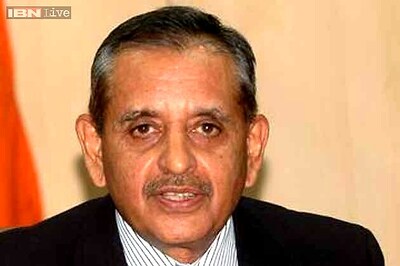
views
Like other developing and underdeveloped nations, India also faces a serious challenge of poor or low health literacy levels amongst its citizens. Health literacy refers to a person’s ability to access, read, understand and use information to make informed healthcare decisions and follow instructions for treatment. India has Sustainable Development Goals to achieve by 2030. Goal 3 titled ‘Good Health and Wellbeing’ is aimed at ensuring healthy lives for all, at every age. It would be hard to attain even 50 per cent of these targets with lower levels of health literacy. International studies have revealed there is a substantial link between good communication and health literacy. Further, the COVID-19 pandemic has demonstrated that lack of knowledge as a result of inadequate communication has hampered our fight against the virus.
Importance of Health Literacy
An optimum level of health literacy is required to make better and more efficient use of healthcare resources and opportunities. People make poor judgements as a result of lack of information, which can have a negative influence on their health and lives. The pandemic has been going on for almost two years and is still affecting every aspect of our lives. One thing that people have learned during this period is that health should always come first.
Poor health choices are not limited to a single person. A poor decision has unavoidable consequences for partners, families and communities. Social and economic factors have an impact on one’s health. As a result, we must recognise that lower health literacy will have an impact on all these determinants. Communication and increased understanding can help people combat issues including hunger, open defecation and poor sanitation habits.
ALSO READ | Omicron is Like a ‘Flash Flood’. So How Much Longer for India’s Third Covid Wave to Ebb?
Data on Health Literacy in India
In India, only a few studies have been conducted to assess health literacy countrywide. However, several studies on specific groups of people have been conducted, and the results are sufficient to demonstrate that Indians have a poor understanding of their health and the services accessible to them, which influences their decisions.
According to a study of ovarian cancer patients, two-thirds of them had never heard of the condition before their diagnosis. Similarly, a 2016 research of adult patients seeking oral health care in a private centre in Bengaluru found that about 65 per cent of patients had poor health literacy regarding preventive oral care and dental hygiene services. A study conducted in 2015 on disease-specific literacy on tuberculosis among the Saharia tribe in Central India concluded that nearly half of the respondents had not heard of TB.
These studies show that low levels of health literacy in India affect everyone, regardless of gender, economic condition or geographic location. Although these levels vary person to person, majority have little or no understanding of their health and what they can do about it.
How Poor Health Literacy Hurts
One of the major consequences of low health literacy is poor health insurance coverage in India. Even while the percentage of insured people has increased in the last five years, the country still has a large gap to close, particularly in rural areas. According to the fifth round of National Family Health Survey, all major states and Union Territories other than Andhra Pradesh, Telangana, Assam and Kerala have less than 50 per cent households with one member covered by a health scheme.
Several socioeconomic factors influence the level of low health literacy. Poverty is said to have the greatest impact on health literacy levels in India. It is often blamed for low levels of education as well. Minority groups see some of the highest discrepancies in health literacy. They are more prone to chronic ailments, which adds to the strain. Further, in many circumstances, they have restricted access to transportation, hospitals and education. This impacts their ability to comprehend their health and the services available to them. All of these factors are impediments to effective communication.
Communication and Health Literacy are Linked
Health literacy is beyond mere reading and writing health concepts. It ultimately means clear and fine communication. First, it helps in improving a person’s ability to find information. There are thousands of sources of information available today because of the internet boom. Better communication builds an understanding of where to capture the accurate information from.
There are several challenges that medical personnel face, such as heavy patient loads, resource shortage and organisational management problems. To solve these issues, to some extent, communication is key. Studies have shown that doctors who have better communication with their patients have fewer clinical encounters with them, saving the time of both the doctor and the patient.
Effective healthcare communication also contributes to health equity. It helps in improving the quality of services for culturally and linguistically diverse populations such as in India. Communication when viewed and done in a cultural context can help achieve a culturally competent and comprehensive quality care. Further, by applying the science of communication, there is even a possibility of bringing down the costs associated with health. Prevention of chronic illnesses can be made more prominent among the general public through effective tools of communication.
What Indian State Should Do
The need of the hour is to address lack of health literacy among Indian citizens. Improvement here will aid mediation of other risk factors in adults of all ages and across gender. Mobilising communities towards better understanding of health is a must. Health literacy of a people is dependent on the literacy of the community they are a part of and interact with.
State governments must invest time and resource in enhancing communication towards community mobilisation for building a healthier society. Indians have little faith in the medical system and we have seen the mistrust grow during the pandemic. This is because the state failed to communicate effectively. This gap must be bridged. Also, since Indians speak multiple languages, there is a need for trained healthcare translators who can address people’s issues in a language they understand.
India must be proactive in enhancing its communication strategy; otherwise, it will be scrambling to catch up with the situation and failing miserably. Different people have different capacities of understanding health messages. Communicating clearly becomes extremely important and is a shared responsibility. It is the duty of the state as well as the medical fraternity that health messages reach the public in a timely manner and are simple enough for people to comprehend.
A thorough awareness of one’s health gives a person the confidence to make smart decisions regarding their own and loved ones’ health. Low levels of literacy and high levels of poverty are clearly impediments to citizens becoming more health-literate. But these can’t be used as justification for doing nothing. Early, proactive and an inclusive approach in communication strategies will provide an opportunity to reduce the number of people who are sick, check the mortality rate and promote social and economic wellbeing of the society.
The author is an Assistant Programme Manager at The Takshashila Institution. She tweets @maheknankani. The views expressed in this article are those of the author and do not represent the stand of this publication.
Read all the Latest Opinions here




















Comments
0 comment